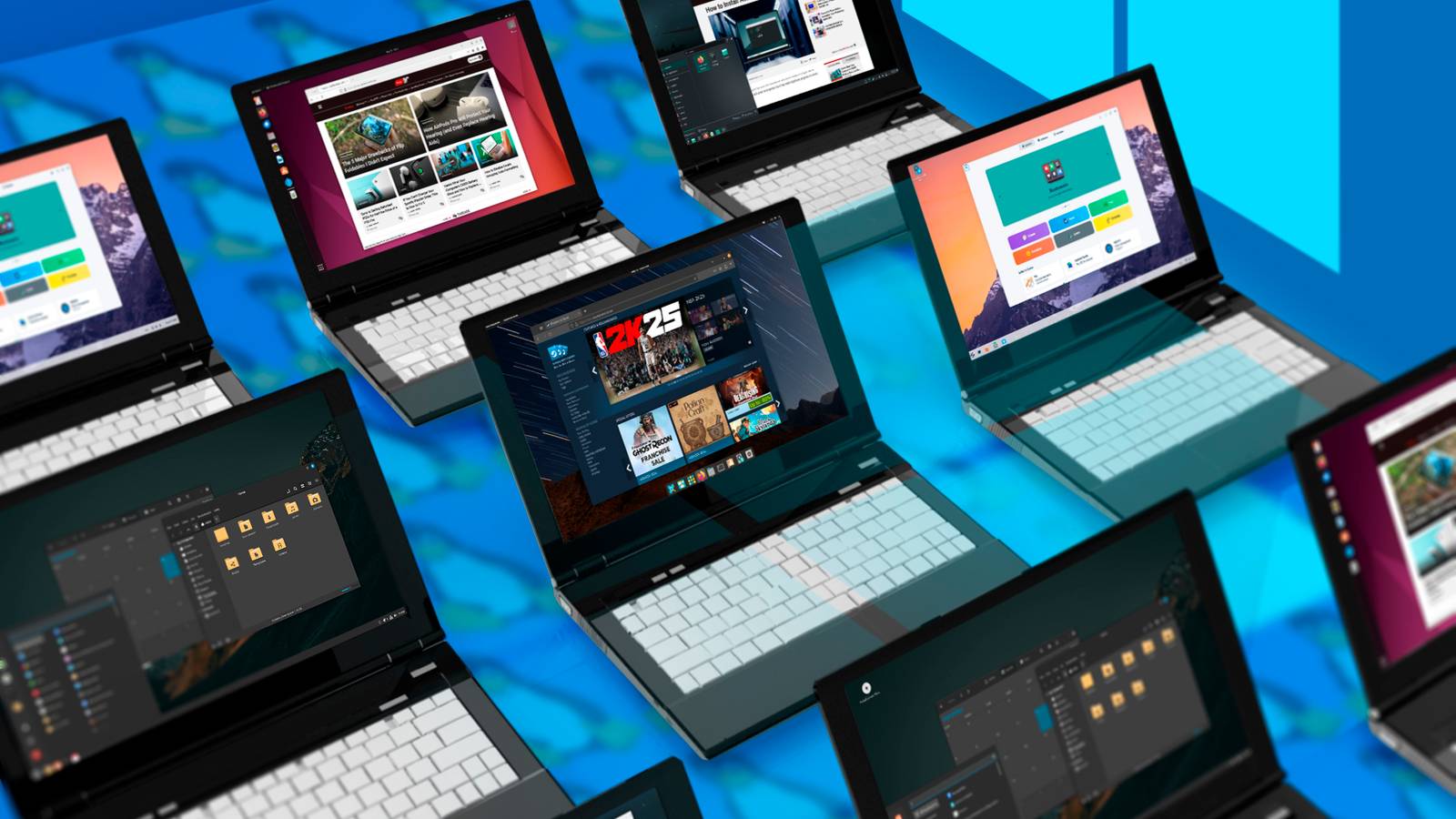There are hundreds, if not more, Linux distros out there, but not all of them get the same amount of attention. Sure, Linux Mint might be the best Linux distro to start with if you’re just coming over from Windows, but for a more experienced user, there’s a lot more Linux has to offer.
There are more unique Linux distros that offer something unique and solve specific problems in ways mainstream distros like Ubuntu or Mint don’t. Whether it’s a focus on minimalism, package management, or a specialized feature, these distros deserve way more attention.
One of the fastest booting OSes you can use
Most Linux distros use systemd, a basic software suite that provides a system and service manager, which is also responsible for taking actions on startup of a normal Linux desktop. This is an excellent bit of software that helps plenty of Linux distros get up and running, but it can feel slow at times.
If you want your Linux installation to boot up as fast as it possibly can, Void Linux is worth a shot. It’s an independent Linux distro that uses runit as its init system instead of systemd. This results in lightning-fast boot times and system operations.
It also uses the XBPS (Binary Package System) package manager, which can feel significantly faster than others. XBPS is built from scratch for speed and helps you build software directly from sources.
The only catch is that Void Linux isn’t for everyone. It can be quite technical to use, and documentation is sparse—not the Linux distro you want to use when you finally leave Windows.
A time machine that actually works
If you miss the classic Windows look from the Windows 98 or XP era, this is the OS for you. Q4OS is based on Debian and fully embraces an older Windows aesthetic with all the capabilities of a modern Linux system. If you’re a Windows user wanting a taste of Linux, this can be a fun option.
The OS works on the Trinity desktop environment alongside KDE Plasma. It’s lightweight, efficient, and feels surprisingly modern to use despite the classic appearance. You can also run both the Trinity and Plasma environments side by side. It’s like having two different OSes on the same machine.
Q4OS is also an excellent starter Linux distro if you’ve never used it before. It comes with a Windows installer that lets you install the OS from within Windows, making the transition as painless as possible.
The audiophile’s dream OS
Daphile is an audiophile-grade Linux distro primarily focused on storing and playing your digital music library. It lets you use the best possible audio quality out of your hardware and can let you set up your own music server running on a headless PC.
This is not an OS everyone can use. In fact, it also isn’t a simple media center distro either. It’s a complete audiophile-grade music server running on Linux as a headless system. You can control everything from a web interface using any device of your choice.
You get bit-perfect playback up to 384kHz/24-bit PCM and native DSD playback up to DSD512. It also handles gapless playback flawlessly and can even play audio directly from the system RAM to minimize system noise during playback. There’s also plug-and-play USB DAC support. The system automatically configures each audio device and can handle multiple players simultaneously.
This is not an OS for everyone, obviously. Unless you’re serious enough to dedicate an entire PC to music playback, Daphile isn’t going to do a lot for you. However, if you are serious about your music, Daphile can transform any old PC into an audiophile-grade streaming solution.
A different kind of Linux
NixOS is perhaps the most radical departure from traditional Linux distributions. The entire system is built around the concept of declarative configuration, where your entire OS setup is defined in a single configuration file.
This offers a few practical benefits for those willing to try the approach. First, you can version control your entire system configuration, meaning fearless experimentation. Every package installation happens in isolation, with all dependencies tracked explicitly.
When you install software in NixOS, it doesn’t overwrite existing files or create conflicts with other packages. You can run multiple versions of the same software, and by extension, your OS, simultaneously. Rollbacks are also instant and don’t break any functionality.
If you need a reproducible environment that can be easily shared and work reliably, there’s no better option than NixOS. It’s also a great option for people who like to experiment with their different drivers and software, allowing easy rollbacks while maintaining system integrity.
The ultimate digital first aid kit
Everyone who has ever used a computer will inevitably face a day when their computer won’t boot out of the blue. Days like these are the reason why I keep a rescue USB handy, and you should too.
SystemRescue is a distro built exactly for these moments. It includes a collection of system repair utilities, including GParted, TestDisk, fsarchiver, ddrescue, and more. These tools work with both Windows and Linux, and SystemRescue does a great job of offering a repair environment that can help bring your PC back to life.
The distro works on both BIOS and UEFI systems and handles all major filesystems, including ext4, XFS, Btrfs, NTFS, and network file systems like Samba and NFS. It’s the distro you hope you never have to use but would be grateful to have when things go wrong.
Mainstream Linux distributions are popular for good reason, but when you have a very specific requirement, niche distros save the day. Whether you’re building a home lab, setting up a dedicated audio system, or simply want to try another approach to Linux, they can come in incredibly handy.
They’re lesser known because of these niche applications, but they can cater to a lot more users and bring them new experiences. For that, these niche distros deserve some more attention.












